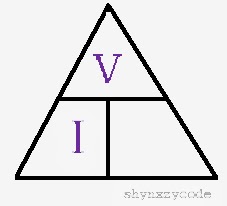Basic electric circuit
Current
is the flow of electrical charges.
Voltage
is referred to as potential difference or electromotive force (emf).The force that pushes electron.
through the wire.
Resistance
impedes the current.
Current that passes through the wire indicated as I, for Voltage is V and our Resistance is R. these
are the abbreviation that is used universally.
Units:
I=ampere (A)
V=voltage V
R=ohm (W),
Current
Here we have the basic electrical circuit. We have a battery serves as our power source, bulb that is
also known as our load, wire that connects to a light, a switch that use to on and off the circuit.
image
Open circuit
When the switch is open (not connected), it is in the state of open circuit and there are no electrical charges that are able to pass completely to the path of the circuit.
In an open circuit the current is zero, resistance is infinite and voltage could be anything.
Close circuit
Now, when the switch is closed, the current from the battery runs through the wire and passes through the bulb and back to the battery. This is now the time the bulb lights up.
In a colsed circuit the voltaget is zero, resistance is zero and current could be anything.
Voltage
We normally think our voltage is in the battery. Voltage is the one that pushing the electrons to the wire.
Resistance
Resistance is the one that resist the current. Our light creates resistance and as a result it has a voltage drop a cross on it. That is what causes the bulb lights up.
Ohm's Law
We already touched on the three terms voltage, current and resistance. Now it is time to discuss them further. Ohm’s Law defines as an important relationship between three very important electrical properties. Let’s take a look of some illustration to understand these three components.
The water in the tank pushes down on the water in the pipe. As the gravity is pulling on the water it makes the flow faster. That is how our voltage pushes electron.
Water flows from the pipe is our current. The greater the force that is exerted the faster the water flows.
and finally, our resistance is like the valve that we use to turn it clockwise and counter clockwise to make the water flows slowly.
Relationship
To understand the relationship of the three important components let us consider the illustration bellow.
To find Voltage we multiply I and R.
for V = I x R
As the Voltage increases the current
also increases.
To find resistance we devide V by I.
for R = V ÷ I
To find current we divide V by R
for I = V ÷ R
As the resistance increases
current decreases.
Knowing one of this formula is easy to derived to get the desired component.












No comments:
Post a Comment